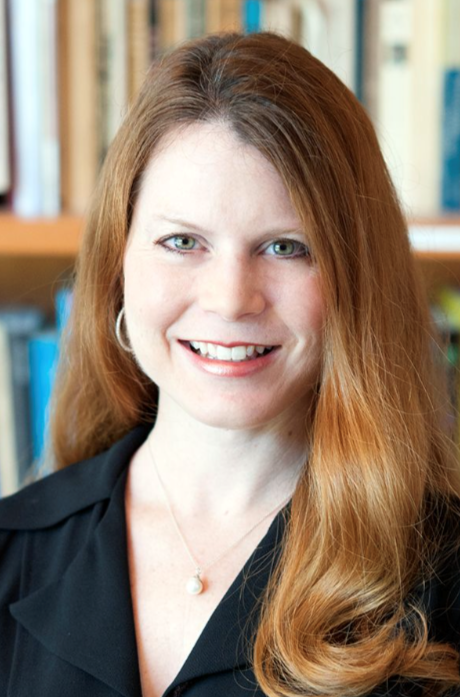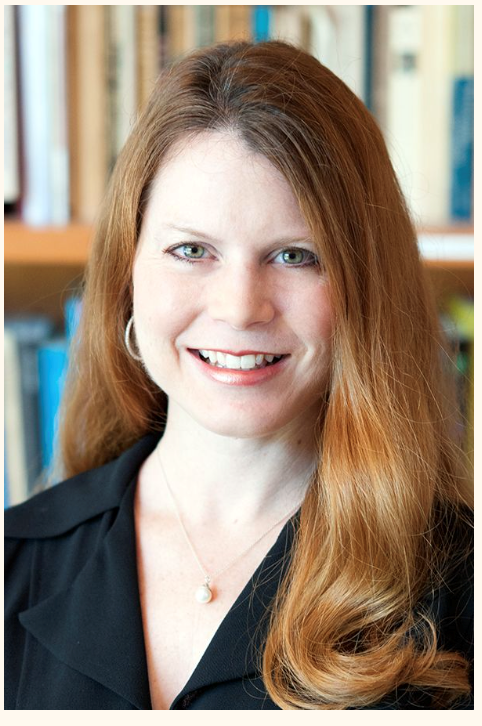HayU Blog
In Conversation with Elisa Schultz about Autism Acceptance
April 26th, 2024
April is Autism Acceptance Month and serves as a time to double our efforts in highlighting and celebrating the autistic community. It used to be referred to as “Autism Awareness Month,” but following the lead of autism self-advocacy groups, there has been a shift in phrasing from Awareness to Acceptance to illustrate the need to go beyond simply being aware of autism to reaching true acceptance. This involves including autistic individuals in all aspects of society and life and providing the necessary support for them to live their fullest lives.
At Hayutin, we are always looking to grow in our own acceptance and celebration of the autistic community, of which many of our family, friends, colleagues, and clients are a part. Recently, Hunja Koimburi sat down with Elisa Schultz, Spectrum Program Director at New Roads School, to learn about how the program supports its autistic student community. Elisa shared her passion for celebrating neurodiversity and her observations about autism acceptance in society over the past 20 years in her role.
Please enjoy some highlights from our hour-long conversation below.
Hunja Koimburi: I would love to know more about your background and how you became the Spectrum Program Director at New Roads.

Elisa Schultz: My name is Elisa Schultz, and I am the director of the Spectrum Program at New Roads School. This is my 20th year with the program, and I have been here since its inception. My background is in Speech Pathology & Audiology as well as Psychology. My first job out of college was working with a non-speaking Autistic child, which changed my life. My experiences paved the way for my passion to create opportunities for neurodiverse individuals.
Hunja: It is so great that you have been part of the program from the very beginning! What changes have you witnessed in autism awareness and acceptance in wider society since then?
Elisa: If we look at the landscape of school offerings today, there are opportunities available to students that were not there 20 years ago. So, from that standpoint, I think, there is definitely a greater awareness of neurodiversity and the need for inclusion, which is a very positive change. In terms of societal understanding of autism, 20 years ago, it was quite linear. The DSM 5 revised the criteria for diagnosis in 2013, just a few years after we started the program. At that time, there were a lot of misconceptions around the spectrum and students’ abilities both in the media and in some educational settings. In general, there was a very linear, limiting way in which it was understood, very much from a deficit perspective. This often caused some families to hold a level of secrecy when they received a diagnosis for their child. Thus, limiting the opportunities for support, accommodations and interventions. Today, there is a greater acceptance of both neurodiversity and of course, Autism Spectrum Disorder. We now look to the strengths and abilities of each student. It is a positive approach; inclusion is also key, and it is great to note that inclusion is becoming more accessible and acceptable within school communities. This strengths-based shift, coupled with access to inclusion, has opened doors for future opportunities for neurodiverse students.
It has also been very encouraging to see greater and more accurate representation of individuals on the Spectrum in mainstream media, so there is certainly much more acceptance and awareness in general society. Educating people in society about Autism Spectrum Disorder and neurodivergence in general has helped to bring about this change. The saying, “When you have met one person on the Spectrum, you have met one person on the Spectrum,” is so accurate. Building a greater awareness of each person's individuality and moving away from a stereotypical understanding of ASD has been a key focus of our entire program since the beginning.

Everything is based on understanding the individual student, their specific strengths and stretches, and how we can provide support. The Spectrum Program has ten students in our middle school (grades 6-8) and 20 in our high school (grades 9-12). With a 5:1 teacher ratio in the Middle School and a 6:1 teacher ratio in the Upper School we can provide differentiated support. Our students are fully integrated into the academic classrooms. There are no pull-out aspects to our program. The Spectrum Teachers provide the New Roads classroom teachers with a detailed understanding of our Spectrum students needs and strengths. They also provide our academic teachers with support, guidance, and scaffolding to help not only our students but the academic teacher. Our students are supported behind the scenes and therefore can be and feel just like any other New Roads student. This allows Spectrum students to find success within the rigorous college prep curriculum New Roads School offers, as well as being part of the community.
At New Roads, all students are asked to be their authentic selves. Neurodiversity is just another aspect of diversity that we celebrate and embrace on our campus. This inclusion allows students to be themselves and feel comfortable dropping their masks. Our students participate in every aspect of school and social life, from academics to music, theater, sports, robotics, clubs and affinity groups. The friendships our students make are not just limited to other students within the Spectrum Program; the full inclusive approach allows them to make friends with shared interests as well as with other members of the program. Often our Spectrum students have friends that are both neurotypical and neurodiverse. It is truly a wonderful aspect of both The Spectrum Program and New Roads School.
Hunja: I know integrating neurodiverse and neurotypical students is a key part of your program. What benefits have you seen from this approach?
Elisa: We feel lucky that with this program, we have been able to both support our Spectrum students while educating our wider school community about neurodiversity. Understanding that every brain works differently highlights why we all have different strengths and stretches. This level of understanding provides an opportunity for empathy. When you can provide greater empathy and understanding, you can open doors for folks to have better communication, more connection, and to understand one another more deeply. It is gratifying to know that we are educating not just our Spectrum students but the entire New Roads Community.
Temple Grandin spoke at New Roads about the need to have different types of minds in society. We need thinkers who are verbal and good with language, we need visual thinkers who can see and differentiate patterns, we also need visionaries and people who are good with a more hands on approach. We need all these different thinkers to have a strong, functioning society. My students, with their wonderful, neurodiverse brains can bring insights and ideas of how to solve problems that other students and teachers might not see. That is a tremendous gift that truly enhances our school community.
Hunja: One of the requirements of the program is that parents attend monthly meetings. What is the purpose of these meetings and how do you find that this helps support your students and their families?
Elisa: Partnerships with parents are truly a foundation of the program. We meet with parents and provide updates on how their child is doing both academically and socially. In addition, we want to collaborate with parents to ensure that skills are being generalized between home and school. If we see something is working well at school, we will share that strategy with the parents and we encourage parents to share any strategy that is working at home that we can apply to school.

The idea of generalizing these skills means that we often meet to talk about how their child is doing socially, emotionally, and academically. We have these meetings every month, but we often speak to families more often if there are specific questions or a certain topic needs more attention. These meetings build strong relationships between the Spectrum Team and the family. It builds buy-in for the strategies we are putting in place and creates a strong foundation of support.
Another huge benefit we have found is that the program has created a community within a community. The parents of students in our program love the fact that they can connect with other parents of neurodiverse kids and talk about shared experiences while discussing the journey that they are on together. It really builds lasting friendships and support among our parents.
Hunja: Lastly, how do you support your students for life beyond New Roads? Specifically, those who are applying to college and trying to find a college that is a good fit for them.
Elisa: That is a great question. To start off, 98% of our Spectrum students move on to four-year university and/or college upon graduating from New Roads School. The 2% often take a gap year, study abroad or use a year of deferment to practice life skills as to ensure they are ready for college life. Some students go to a junior college such as Santa Monica College. Many proceed to a four-year college after a few years.
 time they graduate, so we are aware of who they are as people and what their passions and strengths are, as well as what supports have been most helpful in their journey. As we support our students with the college application process, we always start with their passions and what they want to study and have them look for colleges that offer their chosen field. We then recall their journey at New Roads and identify what supports or environments allowed them to find success at New Roads, what supports they have really benefited from, and then look to see which colleges offer those supports and what it looks like for them to advocate for what they need once they get there. I work closely with all our Spectrum seniors as they write their college essays to ensure they have shared their journey and their truth.
time they graduate, so we are aware of who they are as people and what their passions and strengths are, as well as what supports have been most helpful in their journey. As we support our students with the college application process, we always start with their passions and what they want to study and have them look for colleges that offer their chosen field. We then recall their journey at New Roads and identify what supports or environments allowed them to find success at New Roads, what supports they have really benefited from, and then look to see which colleges offer those supports and what it looks like for them to advocate for what they need once they get there. I work closely with all our Spectrum seniors as they write their college essays to ensure they have shared their journey and their truth.
By Hunja Koimburi, M.A.
Director, Hayutin Education




